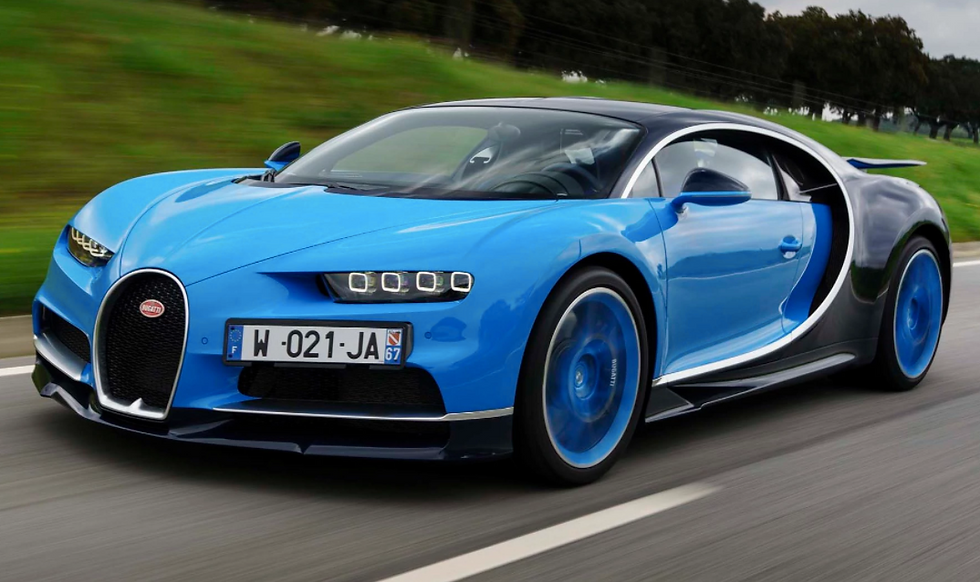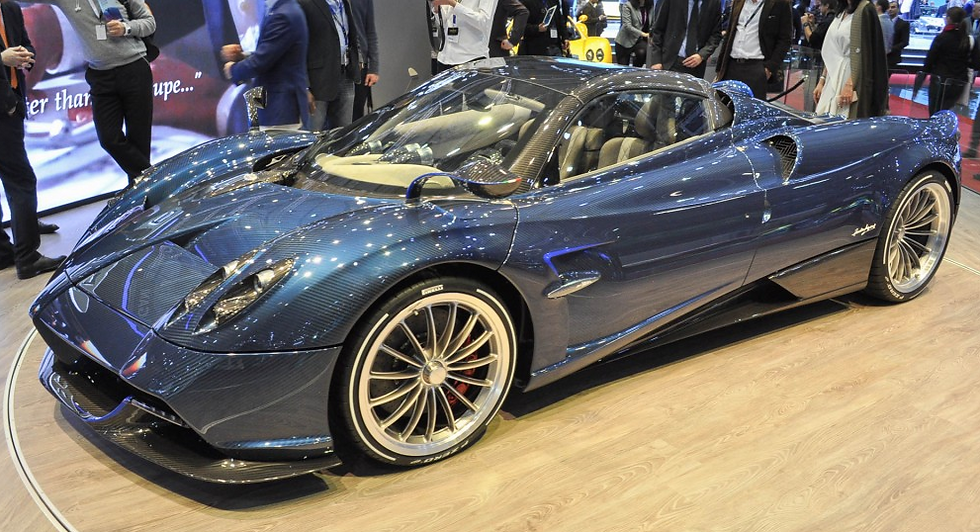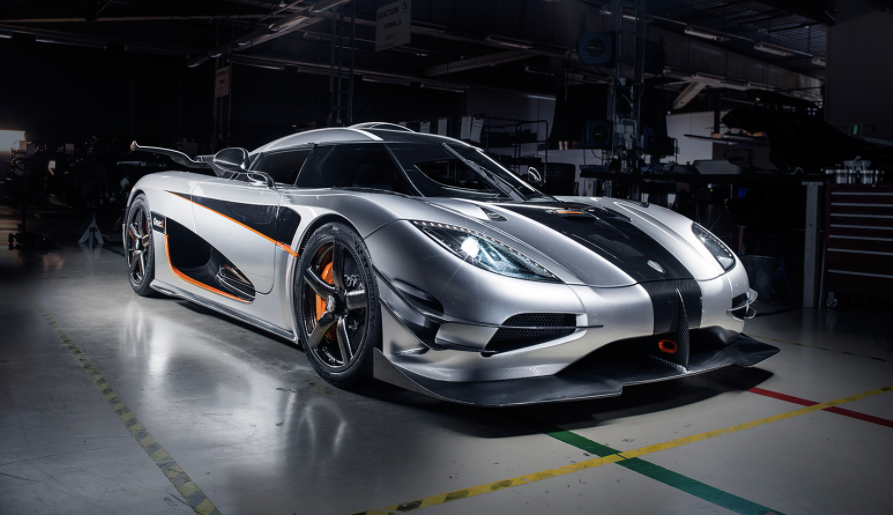The Birth of the Hypercar
- Niket Rajeevan

- Jan 28, 2018
- 7 min read

The history of the car

In 1875, Siegfried Marcus second invention formed the basis of all automobiles of the coming centuries: the first vehicle powered by a four-cycle engine and the first to use gasoline as a fuel, featuring the first carburettor for a gasoline engine and the first magneto ignition.He created an additional two models further refining his design with steering, a clutch and brakes
The beginning of mass production

In the year 1885, Karl Benz, a German engine designer and automobile engineer, developed a petrol powered automobile,powered by a single cylinder four-stroke engine. This car is seen as one of the milestones of this evolutionary journey as it can be considered the first production vehicle due to the fact that Benz made a few copies.

After producing and selling the Model A in 1903, Ford Motor Company's Model T became the first mass-produced automobile in 1908. The primary focus of this new venture was to focus on affordability for the average consumer and this called for mass production. Up to this point, most cars were produced my means of one off or batch production. One off production was an expensive affair and typically involved intensive manual labour and it would take a lot of time; this method of production was only seen in the early era of the automobile. Then, batch production became more common as companies and inventors wished to make the automobile more accessible (although only to the rich. This is because batch production was still time consuming and while moulds could be used to create identical parts, a lot of skilled workmanship was required).
By 1927 Ford produced over 15,000,000 Model T cars and the success of this model can be put down to successful mass production. Mass production involves automation and a higher level of mechanisation during the building process thus requiring less human involvement and subsequently cutting down time and costs, making the car cheaper and more accessible for all.
The modern era

When looking at the history of the car, you can see above, evidently there are different eras of design and engineering, starting from the early, pushcart based cars of the early 1900s. This then developed into more mass produced and spacious cars by the 1930s to 1950s. By the 1970s, manufacturers started designing more powerful cars, known as sports cars. This then developed further by the 1990s into what has been named the super car, a higher performance car which could only be afforded by the rich. Such cars were not mass produced, yet still quite a few were made. In the 21st century, we have now stumbled upon a new breed of car: The hyper car. This has become the epitome of the the expression of human intelligence and engineering and as a result, we have created automobiles that resemble the culmination of luxury and power. Such cars are renowned for their immense costs. If you are buying a hyper car, its not your first car or your tenth. Those who can afford hyper cars have at least invested in hundred or so cars before- It is truly a car for the super rich.
The difference between the Supercar and Hypercar
Here is an interesting way of explaining this I found on a website called Gear Patrol
"Hundreds of horsepower, million-dollar price tags, lap times that make most race cars blush — these are supercars. They’re the top range of today’s performance cars, and the specs they boast outshine the best of yesteryear’s race cars. The term “supercar” is a catch-all first used in the London newspaper The Times back in 1920 to help describe the incredible 6.7-liter Ensign 6. Today, the term is used to describe cars with the best performance, technology and design that the automotive industry has to offer.
Then there is the term “hypercar,” coined to qualify the top one percent of supercars. All hypercars are supercars, but not all supercars are hypercars, and while the qualifiers that allow a car to be elevated out of supercar territory and into the hypercar pantheon aren’t obvious, it’s clear with a few examples. The Ferrari 458 is a fantastic supercar, but it does not match the technological marvel of the 1,500 horsepower Bugatti Chiron hypercar."
Technical specifications of the greatest Hypercars:
Bugatti Chiron

Price: US$2.6 Million
-The Chiron has 1,103 kW (1,500 PS; 1,479 bhp) of power and 1,600 N⋅m (1,180 lb⋅ft) of torque starting from 2000 rpm.
-has a carbon fibre body structure, independent suspension and a Haldex All Wheel Drive system
-The Chiron can accelerate from 0–97 km/h (60 mph) in 2.4 seconds according to the manufacturer,[4] 0–200 km/h (120 mph) in 6.5 seconds and 0–300 km/h (190 mph) in 13.6 seconds.
-The Chiron's top speed is electronically limited to 420 km/h (261 mph) for safety reasons. The anticipated full top speed of the Bugatti Chiron is believed to be around 463 km/h (288 mph).
Pagani Huayra

Price: US$1 million
-twin-turbo, V12 engine developed by Mercedes-AMG specially for the Huayra
-The Huayra's 6.0-litre engine, the M158, produces 730 PS (720 hp, 539 kW) and 738 lb·ft (1,000 N·m) of torque.
-Its top speed is about 238 mph (383 km/h) and it has a 0-60 acceleration time of 2.8 seconds.
-Using Pirelli tires, the Pagani Huayra is capable of withstanding 1.66 g of lateral acceleration at speeds of up to 230 mph (370 km/h).
-four flaps are placed at the rear and front of the car.The behaviour of the flaps is managed by a dedicated control unit that is fed information from systems such as the ABS and ECU, which pass on information about the car's speed, yaw rate, lateral acceleration, steering angle and throttle position.This is intended to achieve minimal drag coefficient or maximum downforce depending on the situation.
-The rear flaps also act as an airbrake. Under hard braking, both the front suspension and the two rear flaps are raised to counteract weight transfer to the front wheels and keep the whole car stable, for instance when entering a corner.
Ferrari Laferrari

Price : 'On 3 December 2016, a LaFerrari was auctioned off for US$7 million (£5,743,500.00) making this car "the most valuable 21st century automobile ever sold at auction"'
-It is a hybrid car, providing the highest power output of any Ferrari whilst decreasing fuel consumption by 40 percent
- 6.3 litre capacity with 789 horsepower
-A kinetic energy recovery system (KERS) adds extra power to the combustion engine's output level giving a total of 950 horsepower
-Ferrari states that the car has a top speed exceeding 217 mph (349 km/h), similar to the Enzo's top speed, however, it is capable of reaching 100 km/h (62 mph) in 2.4 seconds, 200 km/h (124 mph) in under seven seconds, and a speed of 300 km/h (186 mph) in 15 seconds.
-Ferrari also claims that the car has lapped its Fiorano Test Circuit in 1:19.70 which is faster than any other road-legal car Ferrari has ever produced
Mclaren P1

Price: US$1.35 million
-Production was strictly limited to 375 units which, according to McLaren, is to maintain exclusivity
-P1 features a 3.8-litre twin-turbo V8petrol engine.[9] The twin turbos boost the petrol engine at 1.4 bar to deliver 727 bhp (737 PS; 542 kW) and 531 lb⋅ft (720 N⋅m) of torque at 7,500 rpm, combined with an in-house-developed electric motor producing 176 bhp
-With both engine and the electric motor, the P1 has a total power and torque output of 903 bhp
-Power for the electric motor is stored in a 324-cell lithium-ion high-density battery pack located behind the cabin
-he P1 has Formula 1 derived features such as the Instant Power Assist System (IPAS), which gives an instant boost in acceleration via the electric motor, a Drag Reduction System (DRS) which operates the car's rear wing, thereby increasing straight line speed, and a KERS.
-The rear wing also generates a downforce of 600 kg at 160 mph and it boasts of drag coefficient of only 0.34.
-accelerates from 0–62 mph (0–100 km/h) in 2.8 seconds, 0–200 km/h (0–124 mph) in 6.8 seconds, and 0–300 km/h (0–186 mph) in 16.5 seconds, making it a full 5.5 seconds faster than its predecessor, the F1.
-The P1 is electronically limited to a top speed of 217 mph (350 km/h)

-Celebrating 20 years since their victory in the 1995 24 Hours of Le Mans, McLaren announced that they would resurrect the GTR name by launching a track-only version of the P1, the P1 GTR.
-Production of the P1 GTR was limited to 58 units, initially only available to P1 owners.
The P1 GTR's hybrid engine aims to produce 986 bhp (1,000 PS; 735 kW), representing an 83 bhp (84 PS; 62 kW) increase over the standard production P1
The weight of the P1 GTR was reduced by 50 kg (110 lb), achieving a power-to-weight ratio of 687 bhp (697 PS; 512 kW) per 1 tonne (1.1 tons).
-Featuring a new fixed ride height on race-prepared suspension, a fixed rear wing capable of using DRS, and a new exclusively designed exhaust, McLaren's target was to deliver the ultimate track experience
The P1 GTR can accelerate from 0-60 mph in just 2.4 seconds, and will go on to reach a top speed of 225 mph (362 km/h). Additionally, the P1 GTR will brake from 60 mph to 0 in 85 ft, and can corner at 1.54 G
-The car costed US$ 3.06 million to buy
Koenigsegg one:1

Price: US$2.1 million
-1341 horsepower
-claimed curb weight of 1360 kilograms- This means that the power to weight ratio is almost one to one, hence the name
- Koenigsegg one:1 can hit 249 mph within 20 seconds but top speed hasn't been quoted
-The rear wing features high-speed/low-drag, braking, and high downforce settings, mechanically tilting through a range between -6 degrees (low drag) and 25 degrees (air-brake). It contributes to a claimed 1345 pounds of downforce at 160 mph.
The future- Engineering the Ultimate Hyper car

Above is the Mercedes- AMG project one, set to be delivered by early 2019. By many this has been labelled the ultimate hypercar of the century. The immense effort that has been put into the design and engineering aspects of this car has meant that up to now, it will be the closest we have been to achieving road legality for what what is fundamentally a Formula 1 car.
To read more about this car visit:
https://www.carmagazine.co.uk/car-news/motor-shows-events/frankfurt/2017/mercedes-amg-project-one-revealed-the-ultimate-hypercar/
sources used:
-The American Society of Mechanical Engineers- https://www.asme.org/
-Gear Patrol-
https://gearpatrol.com/2018/01/16/supercar-hypercar-defined-what-is-a-supercar/
-Wikepedia - https://en.wikipedia.org/wiki/Main_Page
-If you are interested in Hypercars, an incredible documentary you must watch is 'apex: the story of the hypercar'









Comments